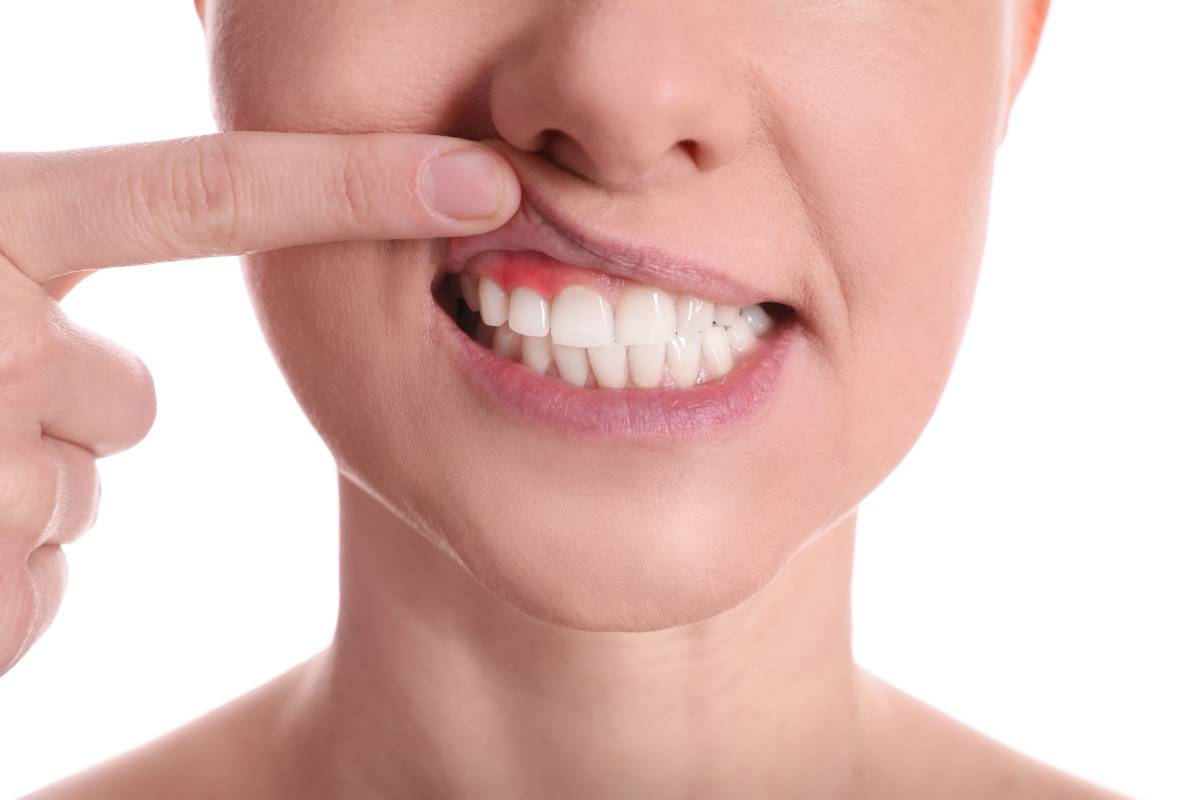Unfortunately, gum disease is quite common in the adult population. But what causes gum disease? In this article, we discuss the main reasons for gum disease and gum treatment options.
What Causes Gum Disease?
Gum disease, also called periodontitis, is a chronic infection of the gum tissue mainly caused by the constant presence of bacteria in the mouth. Due to insufficient oral hygiene, food residue and plaque turn into tartar over time. Tartar and plaque can accumulate on and between the teeth and in periodontal pockets underneath the gum tissue.
Both plaque and tartar are a perfect environment for bacteria to proliferate. On top of that, once plaque hardens and turns into tartar, it is impossible to remove by just brushing and flossing your teeth. Thus, bacteria lingers in the mouth, destroying the enamel of the teeth and the gum tissue. As a result, the gums become irritated and inflamed.
Apart from insufficient oral hygiene, there are other risk factors for gum disease development:
- Smoking or using tobacco
- Some medical conditions, such as diabetes
- Vitamin deficiency
- Hormonal changes in the body
- Use of some medications, such as corticosteroids
- Inherited genetic predisposition
What Are the Symptoms of Gum Disease
The best way to establish the presence of gum disease is to consult a periodontist. Below, we list some of the symptoms of gum disease. If you notice one or multiple of these symptoms, make an appointment with your dentist as soon as possible:
- Red and irritated gums
- Gums that bleed easily and often
- Gums that are painful to touch or pain in the gums when chewing food
- Swollen gums
- Pus oozing from the gums
- Pimples of cysts on the gums
- Unstable, shaky teeth
- Receding gums (gums that pull away from the teeth, exposing more of the tooth that was visible before)
- Changes in the way your teeth fit together when you bite down
- Persistent bad breath and taste in the mouth that do not go away after brushing your teeth
Gum Disease Prevention
There are several actions you can take to make gum disease less likely to develop:
Maintain an Effective Oral Hygiene Routine
Since bacteria cause gum disease in most cases, the best way to prevent it is to maintain a thorough daily oral hygiene. An effective oral hygiene routine consists of several points:
- Brush your teeth twice a day. Dentists recommend spending at least two full minutes cleaning your teeth on all sides, especially along the gum line.
- Choose a toothbrush that is suitable for you: it should not be too hard so as not to harm your gums but able to effectively remove plaque. Ask your dentist for toothbrush recommendations.
- Floss your teeth every evening, making sure to clean each tooth on both sides and remove all the food residue and plaque.
- Use a water flosser twice a day to prevent gum disease and improve overall gum health. This tool is helpful for removing plaque and food residue from hard-to-reach areas in the mouth and along the gumline.
- Use fluoride toothpaste, as fluoride is effective at remineralizing the enamel of the teeth, making them stronger. It also helps suppress bacterial growth in the mouth, thus reducing the reason for gum disease.
Visit Your Dentist Regularly
With time, some plaque accumulates on the teeth even if you have an effective oral hygiene routine. People with orthodontic issues are especially susceptible to plaque accumulation in hard-to-reach spots. As we previously mentioned before, once plaque turns to tartar, it can only be removed with special tools by your dentist. Thus, visiting your dentist for professional cleanings every 6 months is vital to maintaining clean and healthy teeth and gums.
In addition, during your regular visits, your dentist will examine the condition of your teeth and gums. This way, they can spot any potential issues, such as gum disease, before they cause any severe damage.
Other Important Points
Other tips for gum disease prevention include abstaining from smoking and sugary foods and drinks and making sure you receive enough vitamins and minerals.
Gum Disease Treatment Options
There are several options for patients with gum disease. These treatment methods can be used individually or combined, depending on the severity of the case:
- Laser treatment
- Scaling and root planing
- Periodontal pocket reduction procedures
- Boon and gum grafting
- Antibiotics
- Jawbone restoration procedures (in cases when gum disease affects the jaw bone)
Treat Gum Disease at Baseline Dental
If you suspect you have gum disease, make an appointment with a reliable dentist at Baseline Dental as soon as possible.


